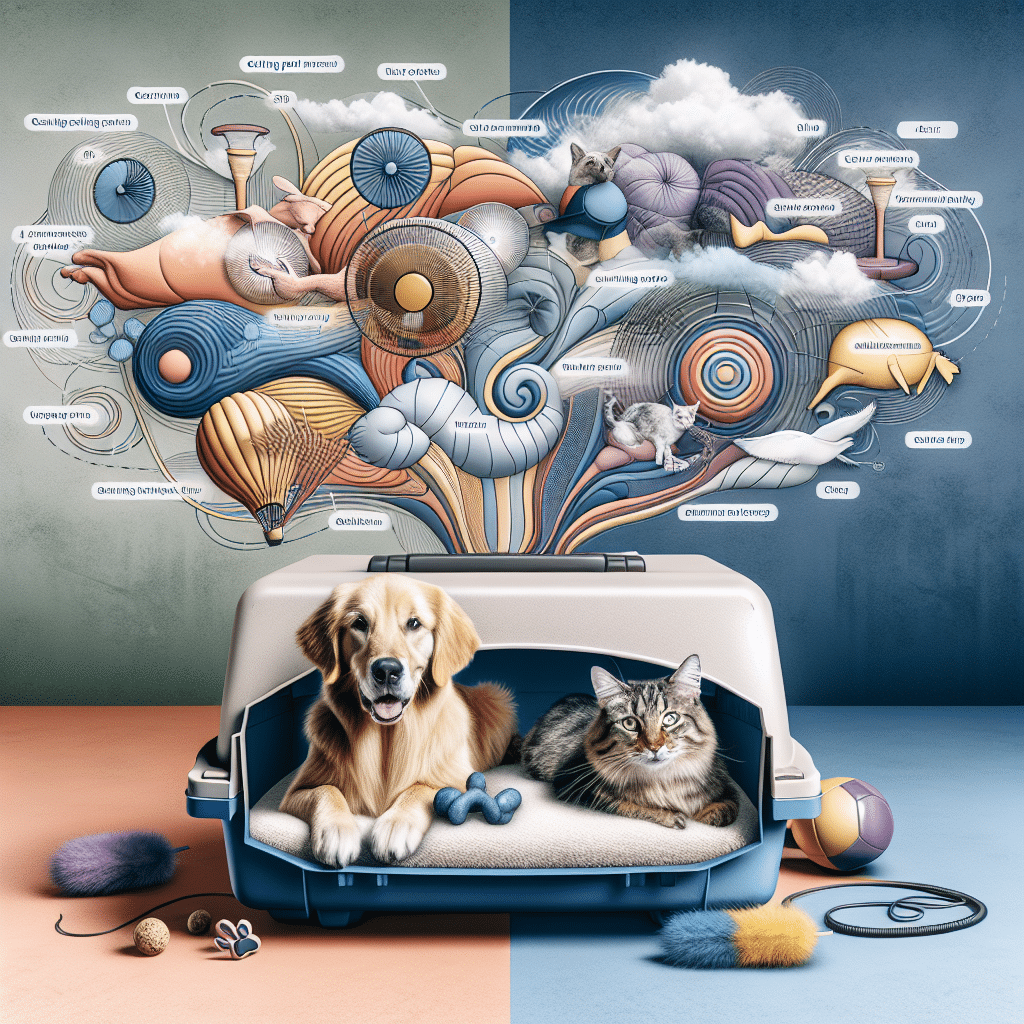Understanding Pet Stress and Anxiety During Travel
Traveling can be a stressful experience for pets, leading to anxiety that can affect their health and overall well-being. To ensure your furry companions remain calm and comfortable while on the road, it is essential to implement effective stress-reduction techniques.
Preparing for the Journey
1. Familiarize Your Pet with Travel Equipment
Introducing your pet to their travel equipment well in advance can ease anxiety. Make sure to have a comfortable and secure crate or travel carrier. Let your pet explore the carrier at home, placing their favorite blanket or toy inside. Encourage them to enter and exit freely, creating a positive association with the space.
2. Schedule a Pre-Trip Vet Visit
Before embarking on your travels, schedule a veterinary check-up. This appointment should assess your pet’s overall health, enable you to update vaccinations, and discuss any potential anxieties. Your vet may recommend anti-anxiety medication if your pet is particularly prone to travel stress.
3. Training and Conditioning
Basic training can increase your pet’s confidence in unfamiliar environments. Practice short car rides, progressively increasing the distance. Reward your pet for calm behavior, creating a positive feedback loop that helps alleviate anxiety.
During the Trip
4. Create a Calm Environment
A serene environment plays a crucial role in reducing travel anxiety. Use soothing scents, like lavender, which can be beneficial for pets. Essential oil diffusers designed for pets can create an atmosphere that encourages relaxation.
5. Keep Pets Secure
Ensure your pet is securely positioned during travel, whether in a crate or with a seatbelt harness. This not only protects them during sudden stops but also instills a sense of safety that can lessen anxiety.
6. Maintain a Comfortable Temperature
Ensure the car is at a comfortable temperature for your pet. Use climate control features to avoid excessive heat or cold, as extreme temperatures can lead to discomfort and stress.
7. Schedule Regular Breaks
During long trips, plan regular stops to allow your pet to stretch, relieve themselves, and have some water. Use this time to allow your pet to explore a bit; ensuring they remain on a leash in unfamiliar areas promotes safety and control.
Maintaining Comfort During Travel
8. Provide Familiar Items
Bringing along familiar items, such as blankets or toys, can offer comfort. These items carry the pet’s scent, providing reassurance in an unfamiliar environment.
9. Mindful Feeding Practices
Avoid feeding your pet immediately before traveling to reduce the risk of car sickness. Instead, give them a light meal a few hours before departure, and bring along healthy treats for rewards during breaks.
10. Use Calming Products
Various calming products are available, from pheromone sprays to calming collars. Research these options and consult your vet to find the most effective products suited for your pet.
At Your Destination
11. Establish a Safe Space
Upon arrival, create a designated ‘safe zone’ for your pet. This could be a quiet room with their bedding, toys, and water. Allow your pet to explore their surroundings at their own pace to avoid overwhelming them.
12. Maintain Routine
Try to keep your pet’s feeding and exercise schedule consistent with their routine at home. Familiarity and routine can be instrumental in reducing anxiety.
Behavioral Techniques
13. Positive Reinforcement
Utilize positive reinforcement techniques to encourage calm behavior. When your pet is relaxed in the car or at their new location, offer praise or treats to create a pattern of positive experiences associated with travels.
14. Desensitization Training
Practice desensitization training to progressively expose your pet to travel-related stimuli. Gradually expose them to noises and movements they might encounter while traveling, rewarding calm behavior throughout the process.
Special Considerations for Different Pets
15. Dogs vs. Cats
Dogs may adjust more readily to travel, but they often require more physical activities during breaks. On the other hand, cats may prefer confined spaces with minimal interaction. Tailor your approach depending on whether you are traveling with a dog or a cat.
16. Small Pets and Exotics
Smaller pets, such as rabbits or ferrets, may require specialized carriers and handling strategies. Ensure they have adequate ventilation and protection from stressors during travel.
Seeking Professional Help
17. Consult a Pet Behaviorist
If your pet experiences severe anxiety, it may be beneficial to consult with a certified pet behaviorist. They can offer tailored strategies and behavioral modification training.
Keep Updated on Travel Regulations
18. Research Local Regulations
Ensure you are familiar with the pet regulations of your travel destination, including leash laws, breed restrictions, and vaccination requirements. This preparation helps avoid unexpected stressors during the trip.
Ensuring Safe Travel
19. Microchip Your Pet
Microchipping is essential for pets traveling away from home. Should you become separated, a microchip significantly increases the chances of your pet being returned.
20. Pack an Emergency Kit
Always travel with an emergency kit containing your pet’s medical records, first-aid supplies, and any medications they may need. This preparation can help manage unexpected situations and reduce anxiety.
Emphasizing Bonding Time
21. Spend Quality Time
Travel provides an excellent opportunity to strengthen bonds with your pet. Engage in playtime, explore new places together, and share experiences that can help alleviate stress.
By implementing these detailed strategies and being proactive in preparing before, during, and after your travels, you can significantly reduce your pet’s stress and anxiety, ensuring a more enjoyable experience for both you and your furry friend.
